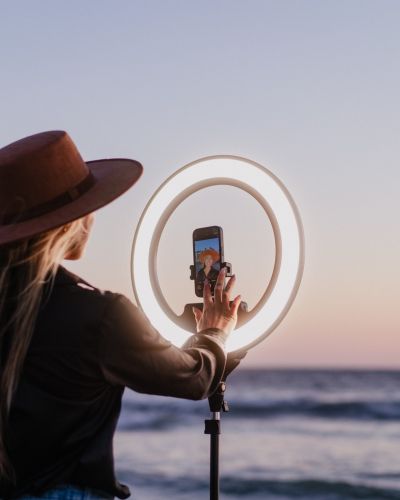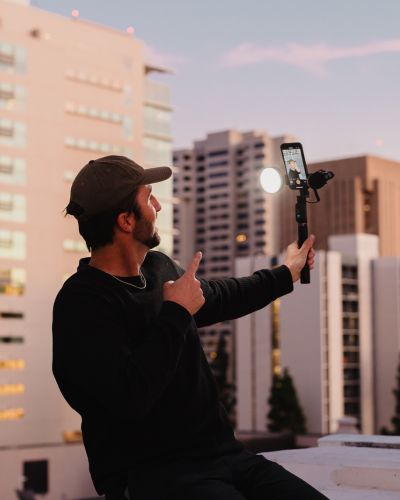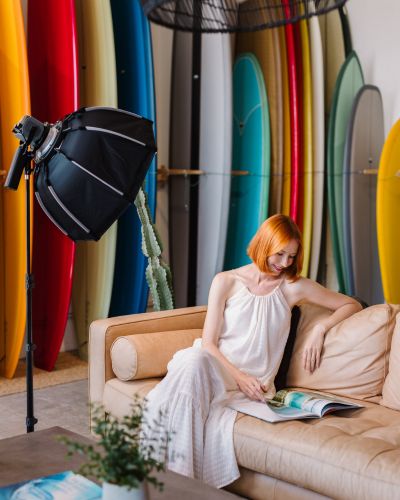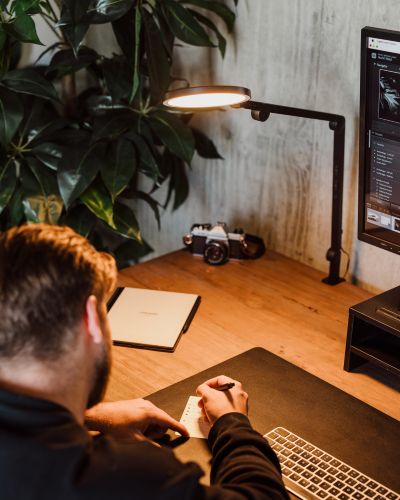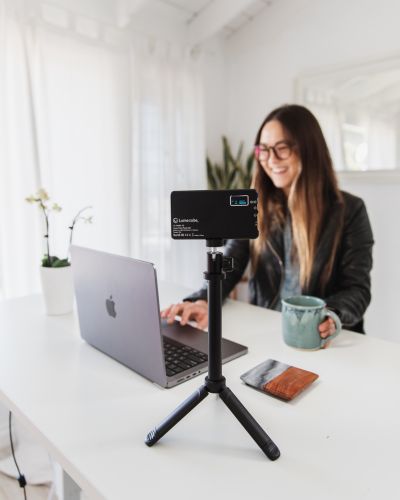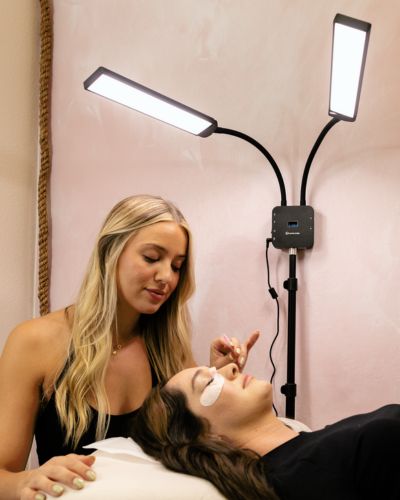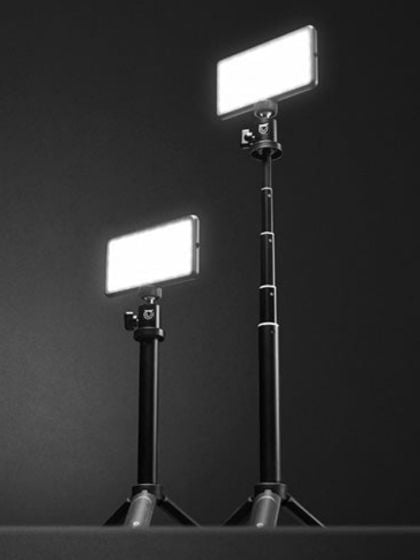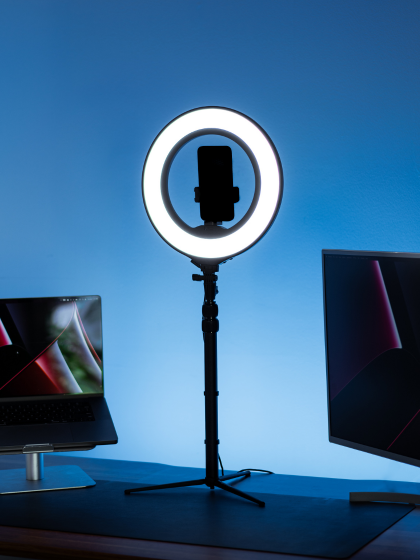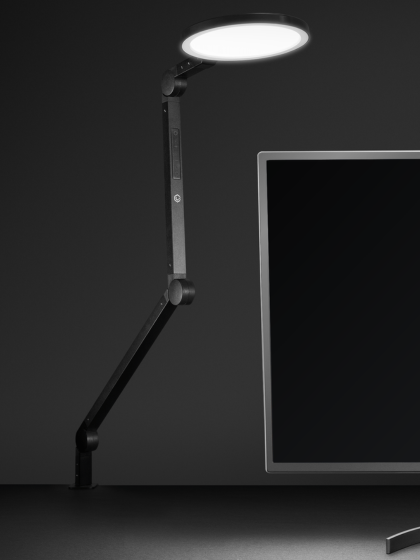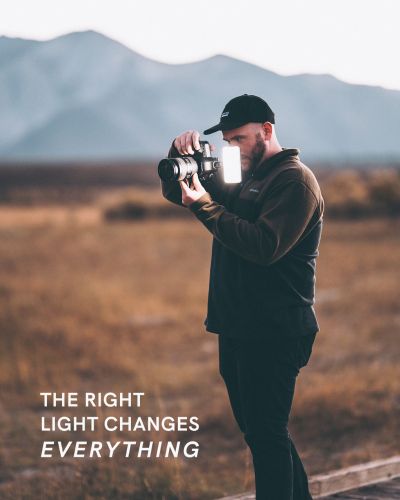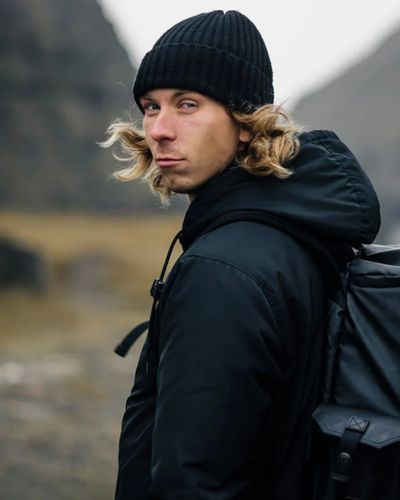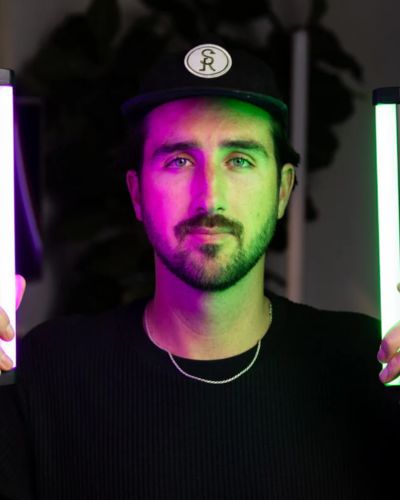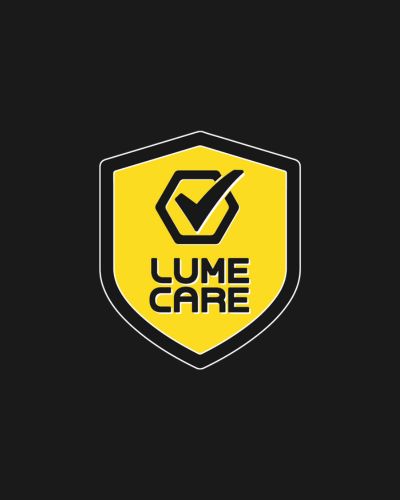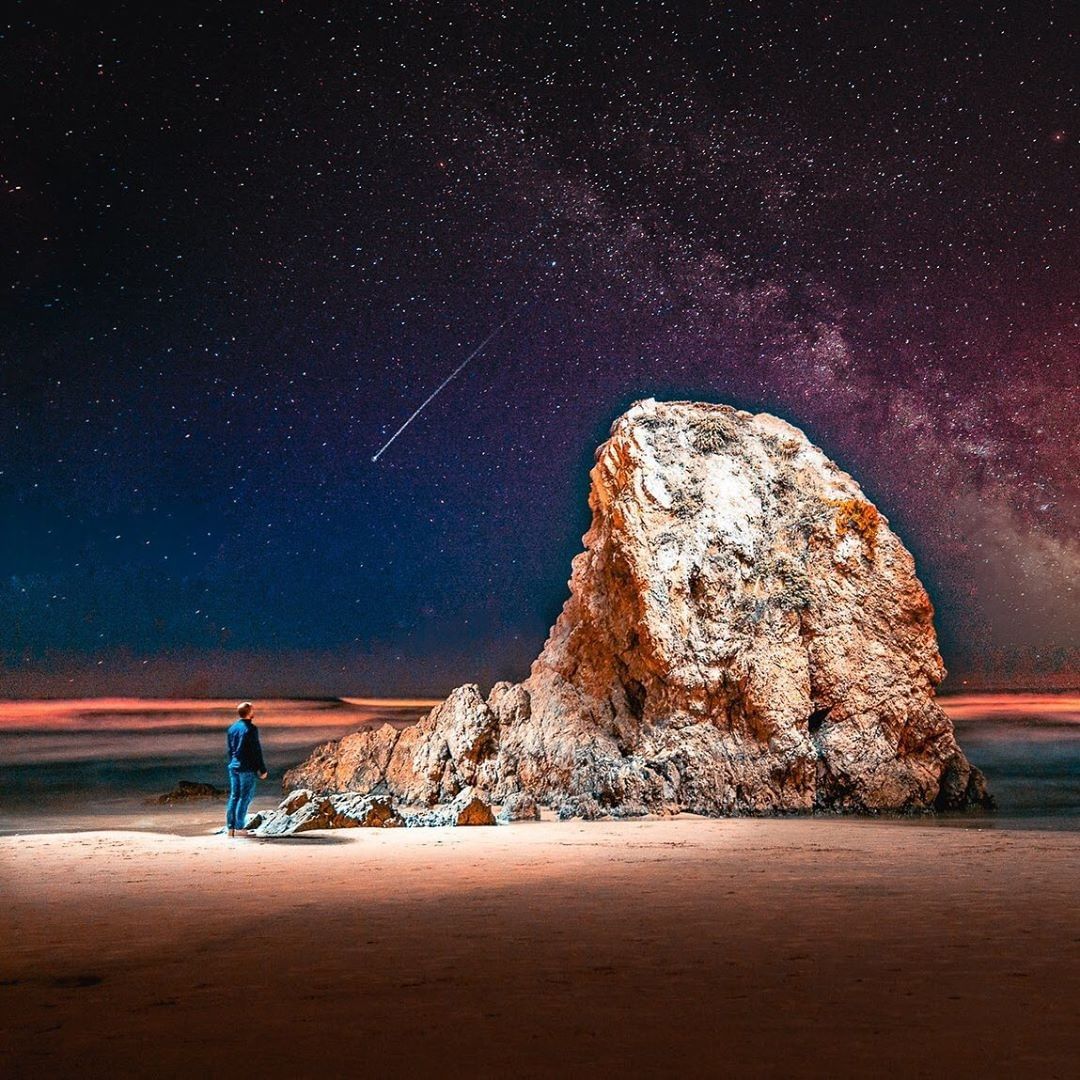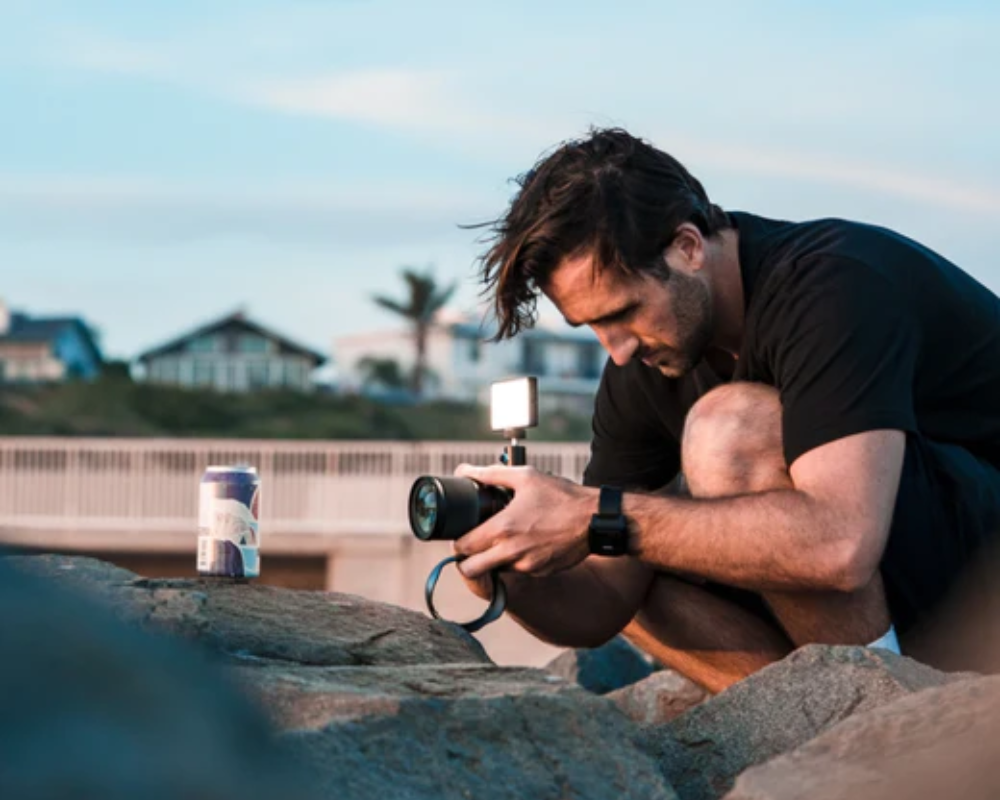
Before we get to the photo, who is Roamaroo?
We are Scott and Collette, a married couple who in 2015 decided to take a “gap-year” from the corporate world and travel the world. During that trip we started Roamaroo, a travel-focused production company.
Where was this image taken?
Pismo Beach, CA
Is there a story behind why you chose Pismo Beach? I am sure there were a ton of epic spots to choose from, so why there?
As you see in the photo, the rock in Pismo beach is iconic. There aren’t many other spots like it on the California coast. I knew the rock would be a great subject to light paint with the Lume Cube on my DJI Mavic Pro 2 drone.
Did any pre-planning go into capturing this shot?
I initially had the idea to light a subject (person) and an object (rock) with the Lume Cube utilizing my drone. Once I scouted the location and saw the rock during the day, I knew I found the location to realize my vision. Since it was a long exposure ~8 sec, I only had a few attempts before my drone battery died.
What camera/lens did you use? And can you share your camera settings used here?
Sony A7III, Iso 1000, 8-sec exposure, DJI Mavic Pro 2 drone, Lume Cube lights. The photo is a double exposure. For the first photo, I used the drone to light paint the rock. For the second photo, the drone was stationary while I stood in the light. I put the camera on a 10-second timer and ran into place for the second shot.
It looks like you caught a shooting star in the background, is this a composite shot or did you just have great timing?
I wish the sky was that clear and beautiful. I used Luminar 4 to input a different sky.
How many Lume Cubes were used in the shot? Do you remember the brightness settings? Where did you place them?
I had 2 Lume Cube Air's on my drone but only one was on. The brightness was ~50%. It was a creative task in itself to manage everything at once while flying the drone and adjusting the settings in the Sony Camera.
When shooting with Lume Cubes in the dark night, nailing the exposure can be difficult. What is your process of finding that perfect exposure where nothing is blown out, nor is it too dark?
It takes a little bit of trial and error. To start, I shot a few photos of the rock without the Lume Cube. With those shots I had the Iso and Aperture set. From there, I knew that when I used the Lume Cube I could just reduce the exposure time by a small amount to get the right exposure.
Can you explain your post-process on this image?
The first edit pass was completed in Lightroom. I then exported it into Luminar 4 to replace the sky. Once that was finished I did some final touch-ups in Lightroom.
Do you have any tips for people that are trying to shoot at night or just getting started in photography?
Wear a jacket. :) It’s always colder than you think it will be and the shots always take longer than you expect. My main tip is to just go try it. Most of the learning will be done in the field.
Did the image turn out how you envisioned it?
Somewhat. Like every artist, all we can see is the imperfections in our art. It was a fun project and I can’t wait to try it again.
Any plans to go back to this location and try something new?
Maybe not this location, but I would like to do a photo with my wife Collette.
Describe Lume Cube in 5 words or less.
Pocket-size lighting solutions.

